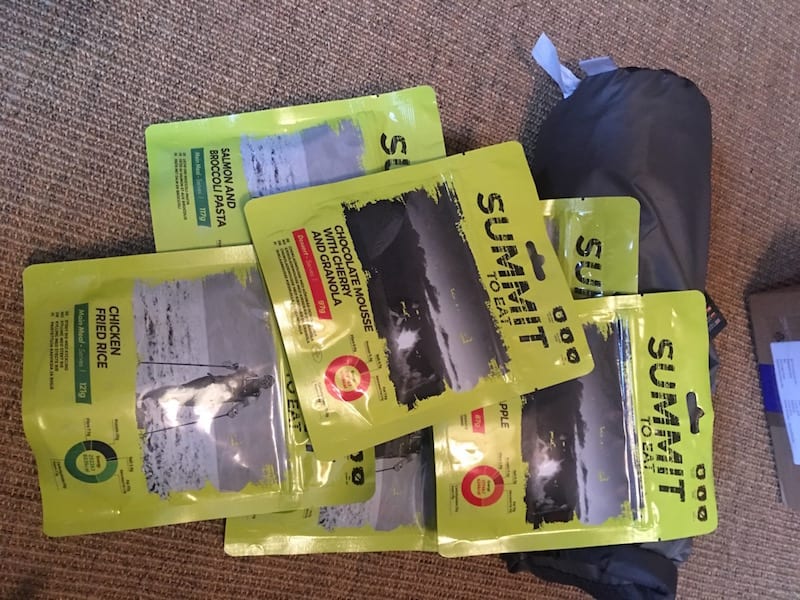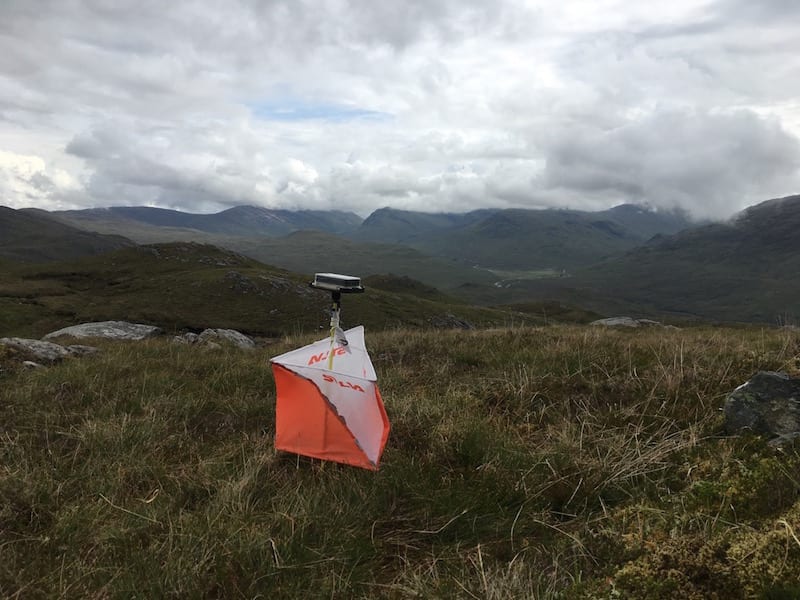I recently took part in the first Scottish Mountain Marathon. You can read my blog about completing the mountain marathon but, first, I wanted to give some first impressions.

What is a mountain marathon?
A mountain marathon is an extended form of fell or mountain running, usually over two days and always with a strong orienteering element. Competitors participate in pairs or solos, depending on the event, and they must carry their own food and tent.
There are a range of competition courses, Elite, A, B, C and Long, Medium and Short Score.
Elite, A, B and C are linear courses and each checkpoint must be reached in order. The fastest person or pair to complete all checkpoints in the right order is the winner. From Elite to C the course becomes easier. Penalties are awarded for being late back and missing checkpoints.
Score courses require participants to choose the checkpoints to reach and in any order. Each checkpoint has a different score. The Long, Medium and Short courses are timed, with long being the longest time. Penalties are awarded for being late back.
Classes are male, female and mixed.

In short: A mountain marathon is a test of…
- Navigation: How efficiently you find the checkpoints.
- Fitness: How quickly you travel between the checkpoints.
- Mountain craft: Being self sufficient in the mountains for the weekend with a remote overnight camp.
Find out more: What is a mountain marathon?
New Scottish Mountain Marathon
The Scottish Mountain Marathon is a new mountain marathon. When Martin Stone decided to bring to a close the LAMM (Lowe Alpine Mountain Marathon), Shane Ohly of Ourea Events took up the mantle to organise a new Scottish Mountain Marathon.
The SMM takes place annually, somewhere in a remote area of Scotland. This year, the base was Attadale Gardens, Strathcarron, with a large area of hills and mountains being utilised for the course.

My first impressions of a mountain marathon
It all seemed a bit intimidating at first. I had so many questions and concerns:
- To start with, the word “marathon” worried me. Would I be expected to run a marathon back-to-back over the weekend and on rough, mountainous terrain?
- How could I whittle down my kit to be a lightweight pack yet still with all the essential items?
- Could I pack lightweight yet remain warm enough for a weekend of extreme outdoors?
- Would my navigation skills be anywhere near good enough?
- Would I fall out with my racing partner and friend Rob?
- Would Rob become annoyed with me?
- Would I have enough to eat and drink?
- Would I look stupid if I came last?
- Had we chosen the right course – long score – to suit our abilities?
- Would we finish the two-day event?
- Where are all the women?
These were the answers discovered over the course of the weekend


11 questions and answers
1) A Mountain marathon is not the same as a 26.2 mile standard marathon. Depending on the course you choose, linear or score, you might well end up running a marathon or more each day. However, if you enter a score course it’s up to you how far you run in the set time.
Choosing a Long Score course of seven hours meant that Rob and I could push ourselves to walk or run as far as we wanted over the seven hours on the first day and six hours on the second day. If we wanted to finish early we could. If we wanted to walk the entire day we could.
So a Mountain Marathon seems misleading in my opinion because it does not have much to do with the well-known racing distance of 26.2 miles but rather it is “marathon” in the sense of being a long-lasting or difficult task or activity.
Rob commented: “The marathon part is carrying all your own kit for two days and sleeping in a remote place overnight. That makes it a marathon task, rather than the distance covered.”
Saying all this, a Mountain Marathon is a big test of endurance and potentially far harder than running a 26.2 mile trail marathon.
2) and 3) I tried to reduce my kit to the minimum yet still including all the right items. There is a mandatory kit list with these events. However, as hard as I tried I could not whittle down my kit to the same small-looking packs that other people were carrying.


I asked for tips and people told me they spend a lot on buying specialist, lightweight products. I thought I had done well with my OMM products, including Halo waterproof pants at just 80g, OMM Kamleika jacket at 225g and OMM Mountain Raid 1.0 sleeping bag at just 60g.
However, I also know that I get cold so I added a few extras, such as an extra (lightweight) down jacket, a NeoAir thermarest, lightweight insulated Rab gloves, a dry base-layer t-shirt and socks. As it turns out I was very grateful for these items and without them I would have been shivering all night.
I have no doubt there are other participants who are capable of coping better with the cold and prefer a lighter pack while facing potentially more misery, but I wanted to enjoy the adventure. If I ended up cold it could have been, at best, miserable, and, at worst, dangerous. I suffer badly with the cold.
In addition, since Rob and I are friends we each took a tent. This was a stipulation of our own partners and we respected this. However, it did mean I was carrying my own tent all weekend (albeit a lightweight Mountain Hardware at less than 1kg) and I was chillier sleeping in my own tent rather than next to another warm body.
4) My navigation skills were fine. I can use a map and compass, however I did learn a great deal about micro-navigating throughout the weekend.
Rob’s skills were/are better than mine because he had completed a couple of OMMs (Original Mountain Marathons). He was brilliant at discussing his ideas about which checkpoints to go for and also how to navigate while on the run and adapting to the terrain as we came across it.
He also listened to my opinions and on many occasions we worked well together to reach the checkpoints. We reached every checkpoint that we aimed to reach.
We were a lot slower than other more experienced navigators but we talked to each other about our decisions and this made for an enjoyable and educational weekend.
In the end, I discovered I was a fairly good navigator although when I became tired I found my concentration lacking.

5) We did not fall out once. In fact, we had a great weekend, chatting about life, work, racing and the navigation.
We treated the race as more of a training exercise, both mentally and physically, and as an adventure. I realised that a mountain marathon can be enjoyed by all kinds of people and for different reasons.
6) Rob did not appear to be annoyed by me. If he was, he kept it to himself. I did have a five-minute sense-of-humour fail. But this was because I was hungry and tired and so close to the finish line but not close enough.
I was angry in my own head and not with anyone else. I think that being “hangry” at some point in a race like this is common.

7) I carried almost exactly the right amount of food. Snacks were small pork pies, mini peperami sticks, Babybels and cereal bars. My evening meal was Summit to Eat freeze-dried adventure food. This was recommended as being lightweight yet full of calories.
My Saturday evening meal was salmon and broccoli pasta and the custard apple crunch for pudding. For breakfast on Sunday I had the scrambled egg and cheese. They require only hot water and an eight-minute wait to eat.
As far as freeze-dried camping food goes, the Summit to eat meals were tasty enough and filling. This is not gourmet standard food, just a good solution to carrying lightweight calorie-packed meals. I spotted a lot of these products among the mountain marathoners.
We picked up water in an empty plastic milk carton whenever we spotted it. There were plenty of streams with fresh flowing water.
We each added a small luxury of a plastic bottle containing gin.(I carried mine in an empty Fruit Shoot bottle!). I heard many other people saying they take a dram or two of whisky.
8) We did not come last. We did not finish very high up the field either. However, we were doing the Long Score course and I suspect the entrants were mainly experienced orienteers or mountain marathoners. They all looked fit and fast.
Our aim was to enjoy the event and finish in time. This we did. We were the fifth mixed team.
I was stunned by how many points other teams scored but I would hope to improve out score in another SMM.

9) I think we did choose the right course. Rob and I are fit enough to do seven hours one day and another six hours the next day on foot in the mountains. We were both nursing injury niggles so we decided to fast-hike and run sections.
It was a challenge carrying all the kit and navigating by map and compass and without GPS for so long.
I am sure next time we will be faster on our feet and better at navigating but overall it was a superb event and a very enjoyable and challenging adventure.
10) We did finish. On the first day we had more than 30 minutes to spare. This was a little frustrating because it left us wondering if we could have made it to another CP. On day 2, we had to run quite hard to make it to the finish line in time.

11. I have written about how organisers and other women might encourage more female participants in these types of events. Yet again, there were far fewer females at the SMM.
I do think that there is a bit of a disadvantage for women in that we generally weigh less yet we have to carry the same mandatory kit. But I can’t see any other reason why gender should put you off a mountain marathon. It’s a question of having a bit more confidence and giving it a go.
No one forces you to be competitive and certainly we treated the event as more of an adventure challenge than a race. There were pairs that walked all the courses and others that flew across it but by no means should these events been seen as best suited to whippet-shaped men.
Read: Top tips for a mountain marathon.

